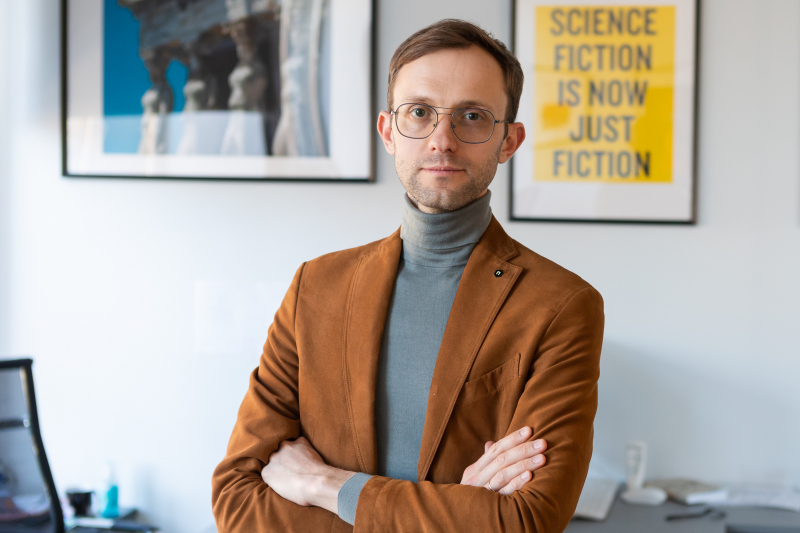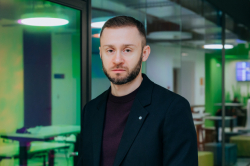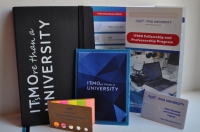You’ve tried your hand at different scientific fields. What are you interested in now and why?
Each step of my education, from Bachelor’s to PhD degrees, was connected with sociology, which I studied at the Higher School of Economics and the Moscow School of Social and Economic Sciences. I started at the intersection of sociology and economics and then I developed an interest in sociology of science and education. After I defended my PhD thesis and graduated, I spent a long time working with statistics of science, technology, and innovation. Then, in 2021, I was offered to head research and education at the Polytechnic Museum.
I often say that I have finally transitioned from theory to practice; broadly speaking I am now developing various formats of science communication. As I see it, it includes education, science popularization, exhibitions, and many different public formats that allow us to talk about science. In this sense, the museum is a great platform. These days, I see myself as an educator and science popularizer.
Why did you decide to join the ITMO Fellowship & Professorship program?
I saw the program as a great initiative and an opportunity for me to experience a new academic environment – a university specializing in engineering sciences. On the other hand, ITMO offers one of the best science communication Master’s programs in the country, which is an interesting combination. As far as I know, at ITMO there are also experts working in the field of art & science, who offer an exciting perspective on how researchers can communicate with the public. All of this creates a unique environment to test out the hypotheses about the way active science communication affects public trust to science. I included these considerations into my application for the program and they make the core of my current research interests.
I submitted my application in late 2021, my project was approved in 2022, and for several weeks now I’ve been collaborating with the team of ITMO’s Center for Science Communication. Although we’ve known each other for a long time: I’ve held several lectures for students and even gave a public talk on New Holland Island last summer.
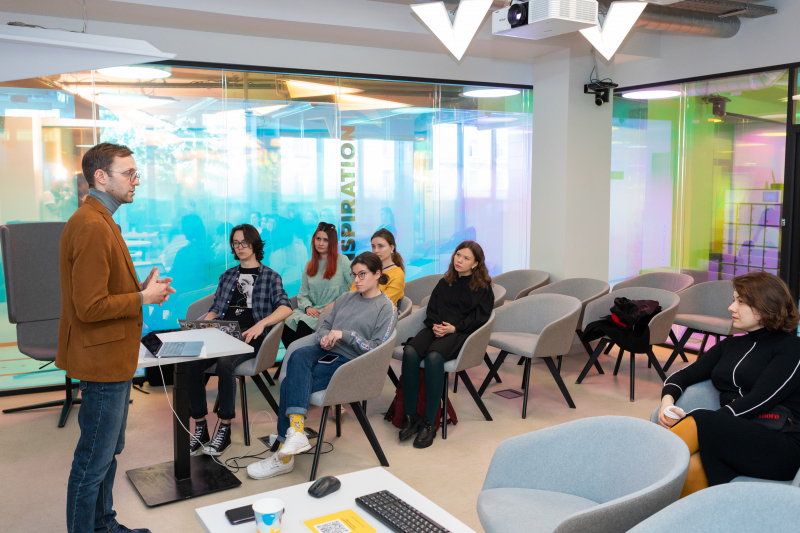
Konstantin Fursov at a meeting with students. Photo by Dmitry Grigoryev, ITMO.NEWS
What are you planning to focus on at ITMO?
In my opinion, science communication is not only a practical activity I am engaged in at the museum, but also a research project. I am curious to observe the building of dialogue between researchers and the public. Previously, I used to only see this process in numbers, from a bird’s-eye view, and now I want to look at this process at the microlevel: to see how communication formats are developed, which channels are used, how communication occurs, and, most interestingly, what happens to participants of the dialogue.
My ideal model of science communication looks as follows: people curious about science can visit labs to not only ask their questions to researchers, but also participate in specific projects that could respond to some public demand. Right now it is impossible for various reasons, but there are great examples of such interactions. For instance, I am talking about citizen science initiatives, such as Moroz (Cold), a project about cow parsnip, which is one of the most popular objects for citizen science. Participants conducted various experiments to see how this plant spreads and if it is resistant to cold. During winter, volunteers removed snow from the plants to freeze its roots and the ground around them. As a result, they discovered that the plant died and it can thus be an effective way to fight its spread. Citizen scientists, who took part in the project, learned more about why the plants spread and limited their geographic range.
There are many similar initiatives. For instance, iNaturalist, which is the largest atlas of flora. Another curious initiative is the phenological network of the Russian Geographical Society; tracking seasonal changes in nature remains one of the major sources of information about the state of flora and fauna.
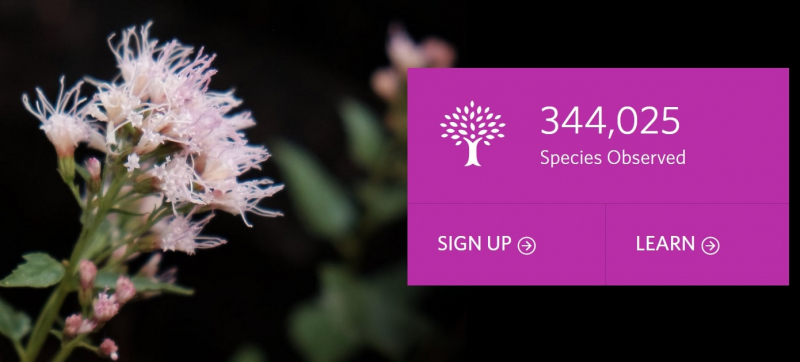
One of the projects on iNaturalist. Credit: inaturalist.org
Citizen science projects have been known for quite a while, but only in the last decade they have been turning into a global trend. As I see it, it is one of the most curious forms of science communication that allows researchers and people not engaged in science to unite their efforts for causes that are important and understood by both parties. As a result, this practice shapes responsive science communication, as I named it in my application.
In brief, the idea is to transit from merely presenting research results to the public to their review and discussion with a wider audience, as well as fine-tuning science communication with regards to public demand. With students of the Science Communication Master’s program and ITMO researchers we will have to design and test different communication formats to see how public engagement in such active processes changes people’s opinion of science and their trust in research results.
Let’s consider the situation with COVID-19, for example. First, regardless of their former views on science, people started looking for evidence-based information about pathogens, viruses, immunity, and vaccines. Public interest grew and so did public trust. Later, during the discussion on vaccines and low efficiency of masks, we saw many people having doubts about science. These fluctuations are like a pendulum and I am curious to see how different communication formats change its movement and amplitude.
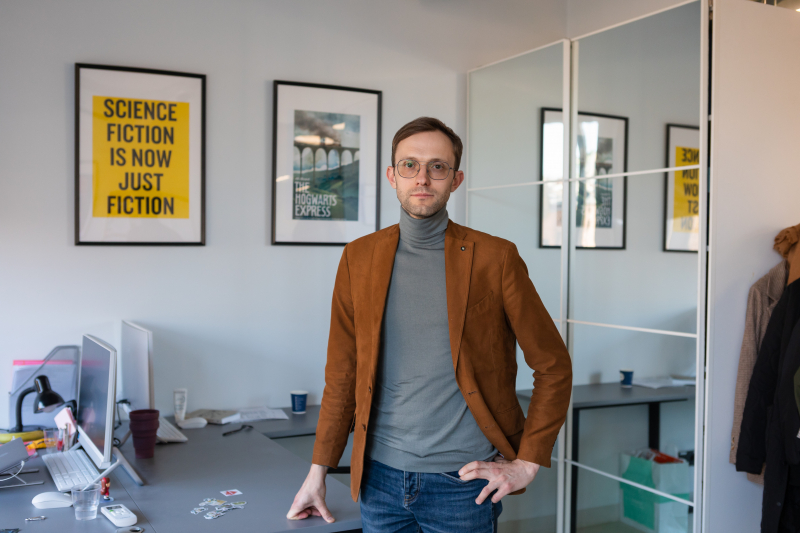
Konstantin Fursov. Photo by Dmitry Grigoryev, ITMO.NEWS
What other projects are you planning to develop at ITMO?
I am only at the start of my path but I am hoping it will be an interesting journey. With Master’s students we are currently discussing science communication formats using the Polytechnic Museum as our case study; and with PhD students we are discussing macrotrends in scientific development: the way statistics works, the kinds of patterns it allows us to see, and the pros and cons of scientometrics. I will also supervise Master’s theses because I am planning to actively participate in developing the Master’s program.
In the future, I am planning to host a course on research culture and academic sociology at the Institute of International Development and Partnership. There, we will consider science from various perspectives to identify the elements that make up its social aspects. Classical sociology of scientific knowledge has an epistemological (that focuses on knowledge validation criteria) and a social (that focuses on the process of acquiring and verifying knowledge) component. We want to introduce a cultural component that will allow us to consider the rules and ethics inside the academic community and beyond.
I am also hoping to organize art & science projects. My colleagues from ITMO’s Center for Scientific Communication and Art & Science Center are on the expert committee of the STArt contest, in which the Polytechnic Museum suggests the participants to consider the future within two dream scenarios.
The first scenario is “A dream with robots” is a completely technology-based and robotized future presided by AI. We want our contestants to think about what would be the place of humans in this world. The second scenario is “Banned robots,” where we invite the participants to imagine that humanity bans complex and autonomous technologies.
Winners will receive grants to bring their creative concepts to life with assistance from the museum’s experts and partners, including one of ITMO’s laboratories.
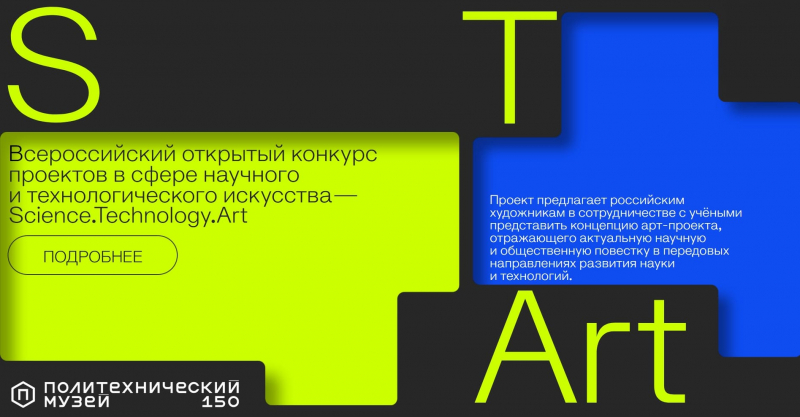
The national open call for science art projects STArt. Credit: start.polytech.one
For nine years, you worked at the National Experts on Science and Technology Indicators of the Organisation for Economic Co-operation and Development (OECD), where you were updating the international standard for statistical assessment of inventions. How did Russian science change over this time?
The first feature that we see is that the Russian science and engineering complex is still one of the largest in the world. Russia is in the top-five countries with the greatest amount of employees in these fields and in the top ten on expenses on research.
However, there are a number of disproportionate features. First of all, in terms of funding sources. In Russia, the government is still the main sponsor of research, while business covers only around a third of expenses. In the majority of countries the situation is reversed, with business being the main contributor and governments funding long-term and complex projects. Secondly, the average age and qualifications of researchers are different. In recent years, science was growing thanks to young specialists under 39 years old, while the number of experts aged 40-59, who are considered the most productive researchers, was shrinking. In other words, there are many young and older researchers, but almost no middle-aged ones. We are now in a transition phase because we have entered a demographic pitfall and the inflow of young people into science and other fields is going to stop. That’s why it’s important to not only attract new specialists into the field, but also keep those who are already employed and provide them with career growth opportunities.
If we consider the relation between research funding and research results (the level of publication and patent activity, as well as international technology transfer), we will see that Russia is behind the world’s leading economies. Despite significant growth throughout the previous decade, our country still hasn’t caught up with the global leaders. It’s just like in Alice Through the Looking-Glass: you have to run as hard as you can just to keep your position, and to get somewhere, you need to run twice as fast. But the biggest challenge, I believe, is that we do not have established mechanisms of knowledge transfer from fundamental research to experimental studies and further on into the economy.
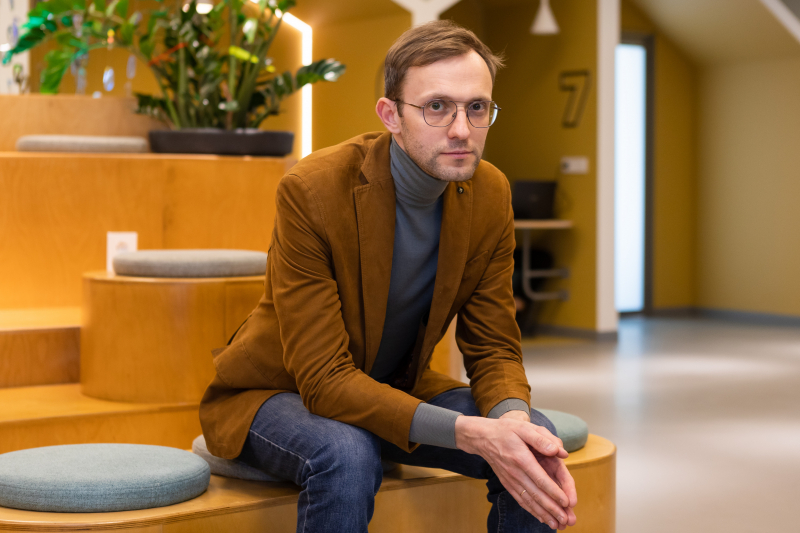
Konstantin Fursov. Photo by Dmitry Grigoryev, ITMO.NEWS
You specialize in statistics. Are there any practical tips you could give our students learning this discipline?
Statistics is an ambiguous field. On the one hand, it’s just numbers and facts, which, whether you like them or not, can tell us a lot about, for instance, some general trends. Statistics is an anchor that can help us describe what is happening better.
I would recommend looking at official publications and open data, including the information published by such international organizations as the UN and the OECD. You also have to consider not only the numbers, but their descriptions – what do they mean, how were they acquired, and how they should be analyzed. For instance, the Higher School of Economics regularly publishes digests of statistical indicators and up-to-date information that allows us to make a number of interesting observations if considered closely.
